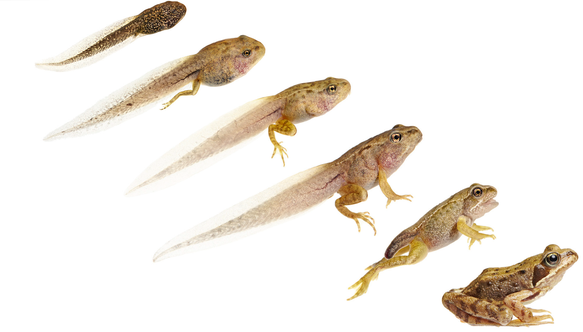Tadpoles, Frogs and What You Need for a Series A
A lot of founders ask, “What are the metrics for a Series A?”
I’ve said this for years. I’ll say it again if you come see our panel on this in NYC Tuesday night where we talk with two founders who raised their Series A.
“You don’t earn a fundraising round as a reward for the past.”
What you’re doing is selling a ticket to the future—and the thing you’re trying to convince an investor is that you’re a) presenting a vision of the future they want to be a part of and b) you can actually execute on it.
That latter part is where we need to talk about tadpoles and frogs.
Somewhere in a tadpole’s journey from a bumpy, balloon-headed pond sperm to a full-fledged lily pad flytrap is a thing that convinces you that it has a chance in hell of actually becoming a frog. (This goes back at least as far as Aristotle, by the way, in case you were wondering who first figured it out.)
It certainly wouldn’t be obvious at the tadpole stage—which, for our purposes, we’ll call our pre-seed round. No, without anything resembling legs, no one would ever imagine what a tadpole could become.
That’s how it sounds to an investor when you tell them you and your co-founder and your half-working prototype are going to ring the bell at the stock exchange one day.
Sprout some dinky little flippers and grow a couple of arm bulges, however—and now you’ve got a little bit more of a credible story. You get your Series A not because you started a sales motion that extends beyond founder-led sales, but because this activity convinced an investor you’ll be able to do it in the future.
Each of those little startup frog appendages—the ability to find quality leads at the same ACV, upsell a customer, consistently convert to paid with predictable CAC, hire high quality engineers—those are all of the motions of a full fledged froggy company that can actually handle and execute with $25 million in the bank.
On the other hand, imagine you’re a founder who scores one big deal with $5 million in ARR. It’s just you and your co-founding CTO—and the customer came in because the buyer happened to be in your HBS class. According to every metric you read, you should be in Series A territory, except that no one’s going to write you a Series A check. You’ve done nothing to show that, in the future, you can handle executing on a $25 million budget—and that’s even more important at this size than it used to be. Series A’s have gotten larger and larger over the past 10-15 years so the expectations for looking more frog-like than tadpole-like are even higher.
You’re a tadpole with one massive arm bud and Aristotle is sitting there looking at you thinking, “I don’t know what the hell that lopsided monstrosity is, but it sure as hell isn’t one of these frog fish.”
That’s why your goals for any round need to be more than just a revenue number or any other single KPI—but they need to be a certain level of predictable function within multiple aspects of the business—go to market, and hiring most of all. You’ll need high quality hires running those functions (which could be the co-founders themselves) but there can’t be big holes, leaving investors to wonder who is going to execute with this new 10x budget.
Yes, it does just so happen that at this stage of a startup’s development, most companies are getting around to a certain level of revenues, but that’s not why they’re earning a new round.
It’s because you’ve developed to the point of looking more frog-like, convincing investors that you can 3-5x revenue and make the… er… leap… to a Series B.
Have you tested your deck and story for that very point being believable? (Happy to help with that.) In fact, whether or not you talk to me about it, testing your story should be something you’re doing all the time. There’s no exact point in either a frog’s or a startup’s development where it’s obvious that they can make it to the next step—and this differs by sector and type of company. There are tons of variables involved, so maintaining a dialogue with your potential next round investors is a useful exercise. Otherwise, you’ll just be burning your way to a goal that perhaps will fall short.
Whether a VC kiss is going to turn you into a fund-returning prince, however, is anyone’s guess.



